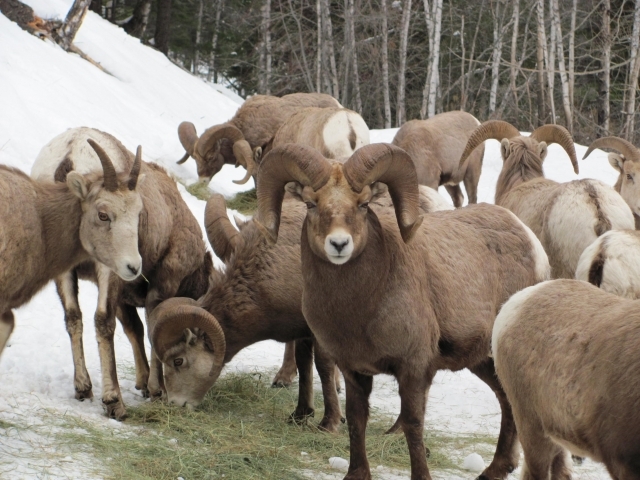Bennett drops a bomb on controversial hunting regs
Comments from the Minister of Energy and Mines have fueled the already burning controversy over new hunting regulations brought in by the government on December 10.
East Kootenay MLA Bill Bennett recently told the Province newspaper that the province “didn’t get it quite right”, saying they will go back to the drawing board later.
He is referring to the recent allocations of wildlife available to resident and non resident limited entry hunters that came out in December, which by and large, gave the guide and outfitters a bigger share of the pie.
In the Kootenays (Zone 4) for example, the guide and outfitters portion of the grizzly tags increased from 26 percent of the allowable hunt to 40 percent; for moose, the percentage increased for guide and outfitters from 10 to 20 percent.
(More details click here.)
This has the BC Wildlife Federation as well as members of the Nelson Rod and Gun Club up in arms for several reasons.
“We spent 10 years negotiating with the province,” said Rod and Gun Club director Wally Kampen.
“All sides, including the guides, trappers, hunters and government agreed on a formula strategy. Then they pulled the whole deal out from underneath us.”
Kampen said since 2007 there was a slow implementation of the negotiated policy until December when the Ministry of Forests Lands and Natural Resource Operations announced the new allocation policy.
“The wildlife belongs to the residents, and it is the government’s job to manage the wildlife,” he said.
“We can no longer hunt in our own backyard.”
Kampen now hunts in the East Kootenay because he said predation and habitat loss have reduced the surplus of animals available for hunting.
The controversial allocations apply to limited entry hunting only. Resident hunters must enter a lottery draw for a tag for species such as grizzly bear, moose, goat and sheep.
But non resident hunters can hire a guide and hunt for these animals if they have the money to pay the fees.
“They are taking a public resource and privatizing it,” said Jesse Zeman, director of the BC Wildlife Federation (BCWF).
“There are now fewer resident hunting opportunities and we’re being treated like second class citizens.”
The BCWF posted a petition protesting the allocation and “so far the response has been great,” said Zeman.
But there was no response from the government until Bill Bennett entered the fray with his comments to the media as a result of a post on face book criticizing the allocations.
East Kootenay guide and outfitters outnumber their West Kootenay counterparts about ten to one and West Kootenay hunters also have more success in the East Kootenay according to Kampen.
The Minister of Energy and Mines from Cranbrook opened a can of worms — but a welcomed one according to Kampen — when he stated the new allocations would be reviewed.
In fact, he is not responsible for the new allocations, and the minister who is, Steve Thomson, is on holidays for another week.
However, Thomson responded to The Nelson Daily through his office by email:
“This latest decision is a result of another comprehensive 18-month review in which both resident hunters and non-resident hunters participated. Government’s intent is for a consistent and transparent policy that is fair to all wildlife user groups.
“Resident hunters are given a higher priority than non-residents, however, this does not imply that resident demand must be fully satisfied before non-residents can be granted harvest opportunities. Instead, it means that the share that goes to residents is considerably greater than the share that goes to non-residents.
“I am currently considering that feedback and have asked ministry staff to evaluate the comments being received.”
It’s estimated that revenues from guide and outfitters amount to $120 million while $230 million is generated from resident hunters.
According to BC Guide and outfitters director Scott Ellis, there are 102,000 resident hunters and 4,500 non resident licences. Since the recession of 2008, non resident hunters have dropped from 6,500 to 4,500, he said.
This begs the question of how a greater allocation will bring back those hunters.
“These allocations are not going to move the needle one bit. I don’t know what the big deal is,” said Ellis.
“There’s only a 3.5 percent difference. The government wanted the allocation process to have some transparency…. and they based it on supply and demand.”
In the Kootenays, for example, six more grizzly bears will be allocated to the non resident hunter, he said.
“We’re dealing only with Steve Thomson, Minster of Forests Lands and Resource Operations,” said Ellis.
“And we have no indication that there will be any review.”
Kampen, however, is hopeful that Bill Bennett will have some impact on a change of the allocations.
“I’d like to see the government and the guide and outfitting industry honour their commitments on how to implement what was agreed upon.
“It’s never going to be the end of the story for resident hunters. This might end up in court.”























